Artificial Intelligence and You: Demystifying the Technology Landscape
A new report from HubSpot
AI
technologies today range from simple to extraordinarily complicated.
Basic chatbots are enabled by natural language processing, which allows
them to understand human language. More complex technologies like IBM’s
Watson leverages machine learning to absorb huge amounts of data and
create predictive algorithms.
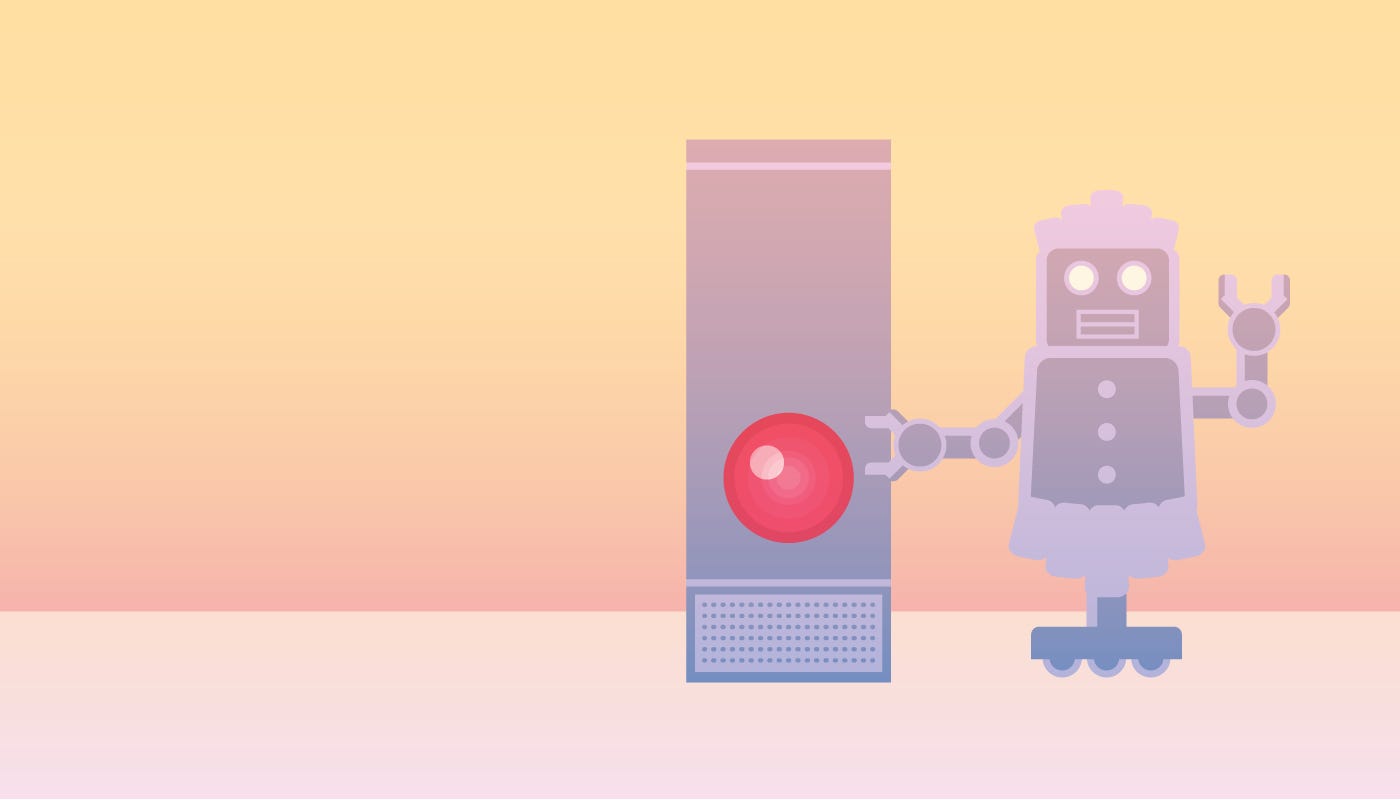
The AI Landscape
The
concept of artificial intelligence (AI) has been tossed around in
books, movies, and media for decades — from HAL 9000 wreaking havoc (2001: A Space Odyssey) to Marvin the Paranoid Android sadly going about its existence (The Hitchhiker’s Guide to the Galaxy).
We’ve
been trained to expect AI-powered devices to have fully developed
personalities who also can either fly or at least fly spaceships. So
some people may be disappointed to hear from tech companies and the media about how we’re entering the age of AI — despite not seeing a single adorable robot zooming around.
Truth is, we are at the very beginning of the AI revolution, but this technology has the potential to change the way we live and work. Even the Obama administration drafted a report that outlines the future impact of AI developments.
As
we sit on the cusp of AI innovation, we thought it was necessary to
break down AI in a practical way. What does the current product
landscape look like, and what technologies are driving these tools? It
can be a confusing mess to an interested observer without a deep
technical background (i.e., most of us).
In general terms, artificial intelligence is
technology that can do things humans can uniquely do, whether it’s
talk, see, learn, socialize, and reason. That’s a very broad set of
skills, and when most of us think of AI, we envision a human-like
android that can do all of those things.
Let’s set expectations: AI technology isn’t advanced enough to produce a Terminator … at least not yet.
AI technologies aren’t sentient. For example, many of us have heard the term “chatbot” thrown around, but are chatbots technically artificial intelligence technologies?
While
chatbots have the ability to understand how humans communicate, they
don’t “think” for themselves autonomously. Some argue that chatbots
aren’t really AI because it can only follow through with pre-loaded
responses or actions, while others point out that a chatbots’ ability to
understand the way we humans write and speak gives it an edge of
artificial intelligence.
In
fact, technologists today often disagree about what falls under the AI
umbrella — and we’ll leave the ‘what qualifies as AI’ debate to the
experts. This report focuses on giving our readers an outline of
current, generally-recognized-as-AI technologies.
Slackbot wants to remind you, it’s “still just a bot”.
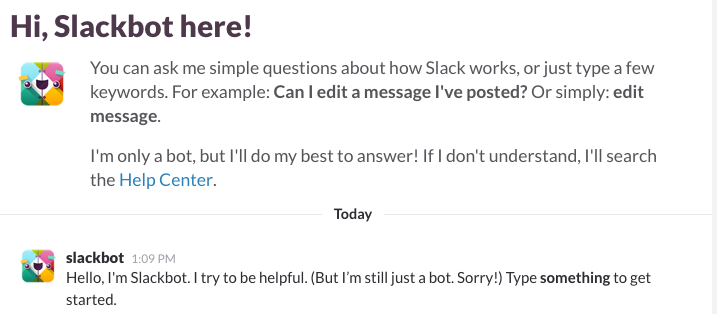

An AI Tool Primer
Let’s start by reviewing the AI landscape and the most well-known tools and products.
In
the graphic below, the x-axis reflects the level of technical
sophistication the AI tool has. The y-axis represents the mass appeal of
the tool.
Most
chatbots have a narrow use case, which is why they’re placed on the
“Narrow AI” side in our chart. A key feature of a chatbot is its ability
to understand text-based commands. Think of chatbots as the evolution
of the command line. Instead of us learning how to ask a program to do
something in their language (“C:\DOS\RUN”), programs now understand our language (“Hey bot, what’s the weather today?”).
Although
chatbots typically have only basic functionality, there is the
potential for high adoption in the future, hence their high placement on
the y-axis. Whether they help us buy flowers (see below), tell us how
many visitors our website received in the past day, or even help us register to vote, these applications are the perfect example of how AI-powered tools will help people to find information and complete tasks more efficiently.
Buying Flowers Through A Chatbot
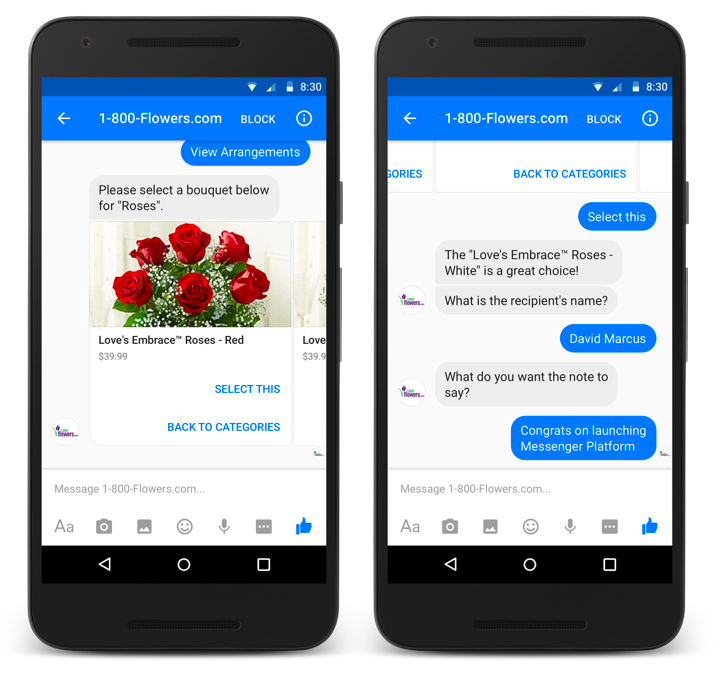
Chatbots
are programs enabled by AI, which differentiates them from more
sophisticated personal assistant programs such as Amazon’s Alexa
assistant. Here’s why: While chatbots can understand language, they can’t do a lot beyond their core use case.
We can ask a chatbot like Poncho,
which is designed to tell us the weather, about the weather. However,
if we ask Poncho to tell us the Cubs’ 2016 record, it won’t know the
answer because it isn’t designed to handle requests for information out
of its scope.
In
contrast, programs such as Siri have the natural language capabilities
of chatbots, but also operate with more sophisticated functionalities
that are driven by machine learning. For example, Siri can act as a
calculator, find the Cubs’ record, and tell you the weather. That’s because programs like Siri aren’t just AI-enabled like chatbots; they’re powered by AI.
On the other side of the AI sophistication spectrum are tools such as IBM’s Watson.
While Watson might be famous for beating humans at Jeopardy, it has
many practical applications because of its deep learning capabilities,
as we found when HubSpot interviewed Ari Sheinkin, VP of Marketing Analytics at IBM.
Watson
uses machine learning to process huge amounts of data on nearly any
topic. Unlike a weather chatbot that can only tell you today’s forecast,
Watson’s machine learning capabilities, when properly configured, can
scan MRIs to spot tumors in humans, figure out what products to
recommend people browsing on websites, and, yes, answer Jeopardy
questions on national TV.
Machine
learning tools such as Watson not only recognize patterns and
commonalities in large datasets, it leverages its past learnings to
become smarter over time. While the practical uses for Watson appear
endless, most individual consumers aren’t going to interact with it in
the near future, so for now it’s relatively low on the mass adoption
axis.
“[AI] is helping doctors make better diagnoses. It is helping … film editors make better films. It’s helping musicians make better music. It’s helping marketers make better bids on paid media.” — Ari Sheinkin, VP of Marketing Analytics, IBM
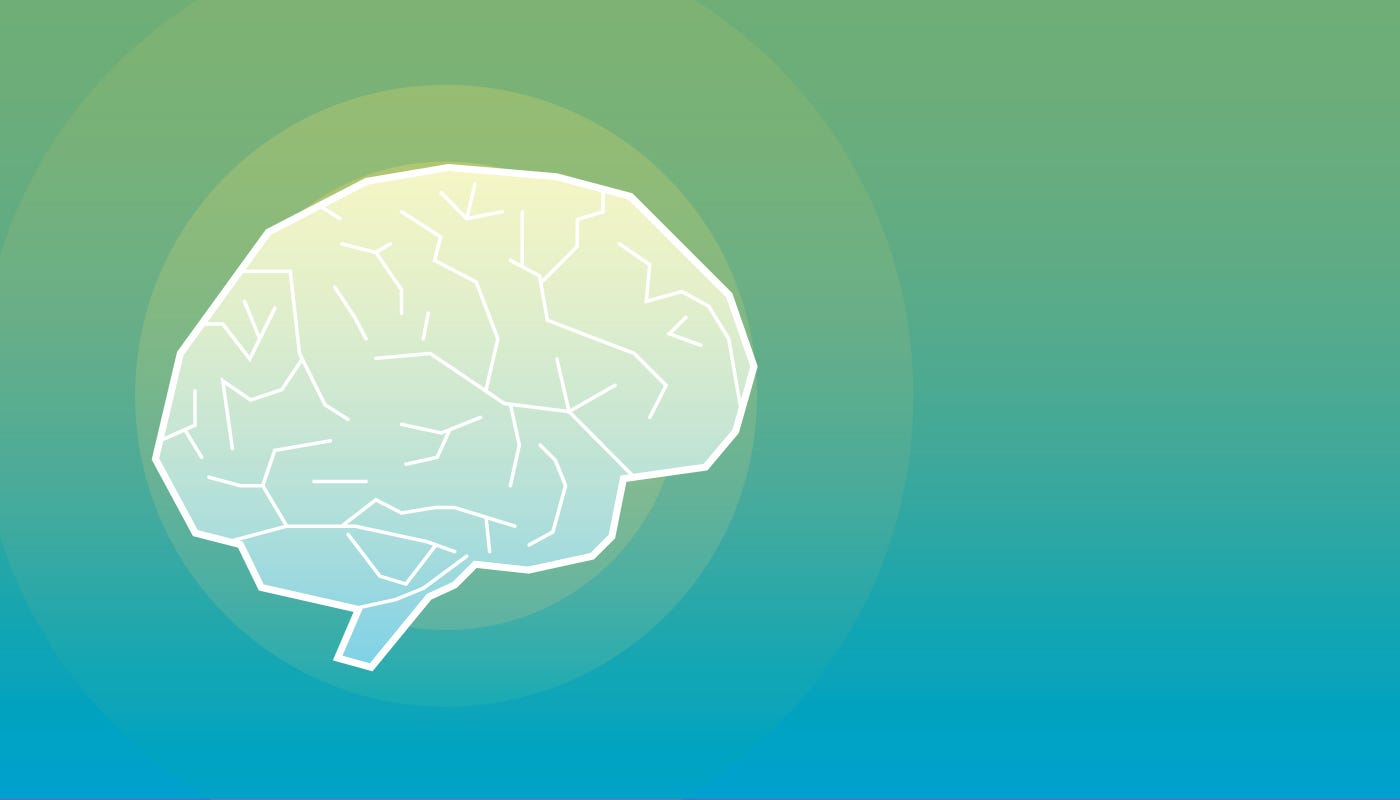
The AI Terms You Need To Know
There are three major disciplines within AI today:
- Natural language processing
- Machine learning
- Neural networks (an off-shot of machine learning)
The descriptions below are simple guides to each technology. (Technologists, please put away your pitchforks.)
Natural language processing (NLP)
NLP
enables a technology to understand text- or voice-based commands.
Understanding the complexities of human language and sentence structure
has typically been touted as a key trait of artificial intelligence.
Tools
like Siri can hear you ask a question through speech recognition,
translate your words into a text-based query using natural language
processing, and then execute the query to find the answer to your
question or request. Once Siri finds your answer, it constructs an
understandable sentence that includes the answer, and it reads it aloud
to you.
Machine learning
Machine
learning is a broad category that most of today’s sophisticated AI
programs fall under. The basic definition of machine learning is as
“clear as mud”: it “gives computers the ability to learn without being explicitly programmed.”
Essentially,
someone can dump a bunch of data into a machine learning program, and
the program will be able to sort through the information, form
conclusions, and generate predictions based on those conclusions.
The data could be anything:
- a marketer’s email open rates from the past year
- the top shared Facebook posts in Brazil
- the buying history of a retailer’s customers
A
machine learning program can take that data and predict the best times
to send out an email, identify the topics that will perform best on
Facebook, or provide purchase recommendations to customers based on what
they’ve bought in the past.
An
AI program can be “supervised,” where it’s programmed to solve for a
concrete goal: “Find me the best time to send emails based on past open
rates.” Or the program can be “unsupervised” and left to find any
patterns on its own: “Here’s a mess of data. Tell me what patterns they
have.”
Neural networks
Neural
networks are a type of machine learning that can be a little difficult
to grasp. Basically, neural networks are built to replicate the way the
human brain works — with neuron’s firing and sending information back
and forth, creating layers of context and associations as a result.
Neural
networks are the means to achieving artificial intelligence: by
creating a program that mimics human intelligence, the program will
eventually become intelligent on its own.
Right
now, the most well-known neural network is Google’s DeepDream, which is
currently combing all the images on the internet. As DeepDream learns
to recognize objects and places, it generates some very odd and
sometimes creepy images in its wake.

DeepDream actually produces the images it sees when it inspects a picture. The weird psychedelic flourishes found are actually patterns that the software has observed and enhanced.
It’s
not entirely clear what Google will do with DeepDream, but it’s safe to
expect that it’ll follow IBM’s Watson playbook and productize DeepMind,
its master AI product, after it matures as a program. Google’s AI
programs already feed into its Maps, Personal Assistant, Home, Google
Translate, and Advertising services.

Making Sense of AI Technologies
The
table below provides more context to the technologies we’ve profiled.
It’s not meant to be exhaustive, but it highlights the outcomes
generated by each technology category and their increasing
sophistication.
One niche example is Google DeepMind’s AlphaGo, a deep learning program that learned to play the ancient board game Go. AlphaGo only does one thing, but the technology behind is notable because the program can organically learn anything.
Another,
more disastrous example is Microsoft’s Tay chatbot, which is designed
to learn and then mimic how teenagers text and tweet. The goal was for
Tay to learn to write like a “cool” teenager by analyzing tweets sent
its way so it could generate original content. The problem was … the
internet. After only one day, Tay began tweeting inappropriate content
after Twitter trolls sent it racist, sexist, and offensive content.
Microsoft suffered a huge PR embarrassment and very quickly put Tay back in beta.
Tay’s misadventures prove it’s still early days for AI.
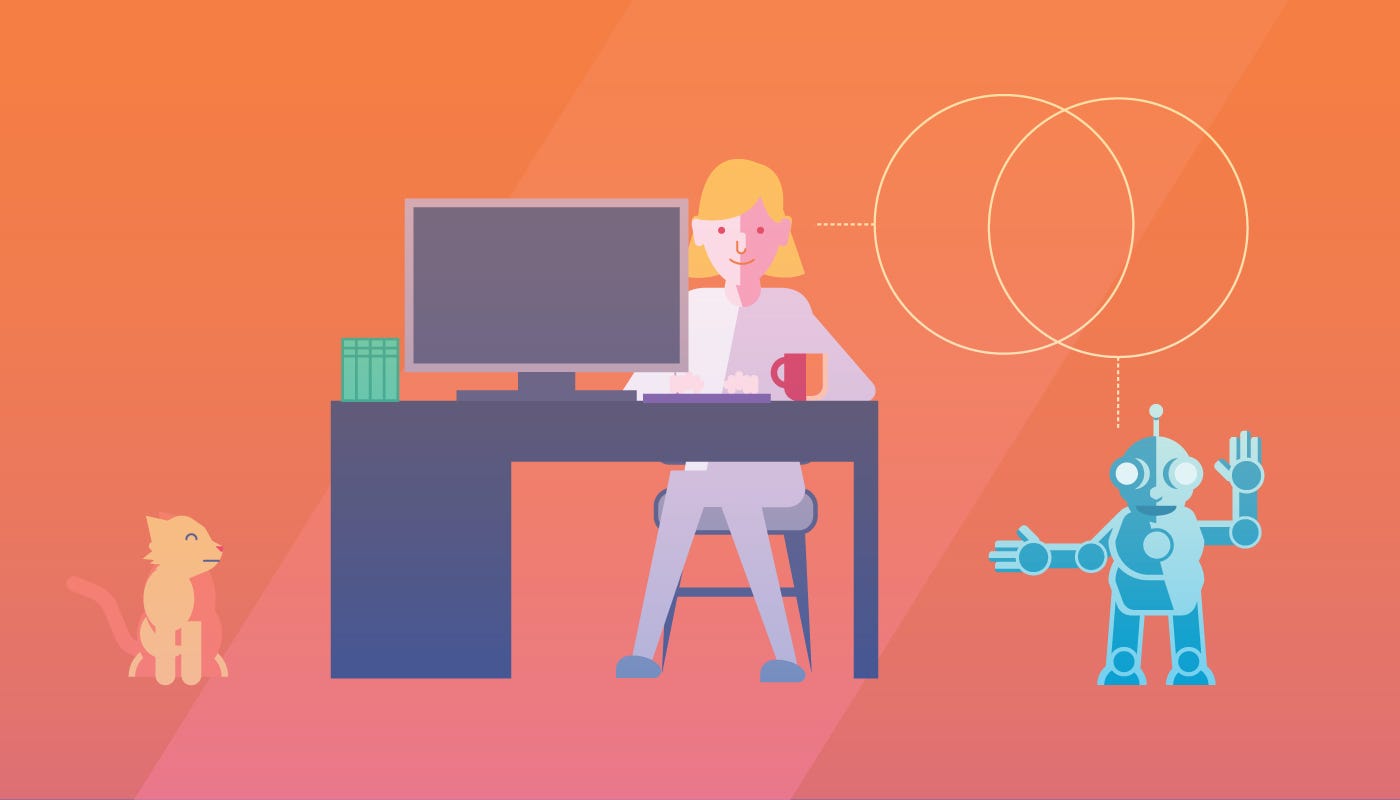
AI and You
Artificial
intelligence has already started to impact all of our lives. As
artificial intelligence capabilities advance, there will be many
exciting innovations that we’ll continue to track here at HubSpot.
For all of us as individual consumers, AI will change how we obtain information, interact with loved ones, and buy from businesses. As professionals,
AI has the potential to augment the way we work and make us much more
efficient by taking care of the busywork we all hate doing. On a societal level,
AI can help us discover cures to diseases, facilitate the education of
millions of people, and yes, even generate heated debates on ethics.
Interested in learning more about how people have adopted AI technologies today?
- Follow this publication: we have more research coming soon on how 1,400+ consumers are already using AI technologies (whether they know it or not)
- Check out some more posts in our Understanding AI series: discover what AI analysis revealed about sales call effectiveness, how AI is going to transform the lives of artists, and learn why AI’s next challenge is access not interface.
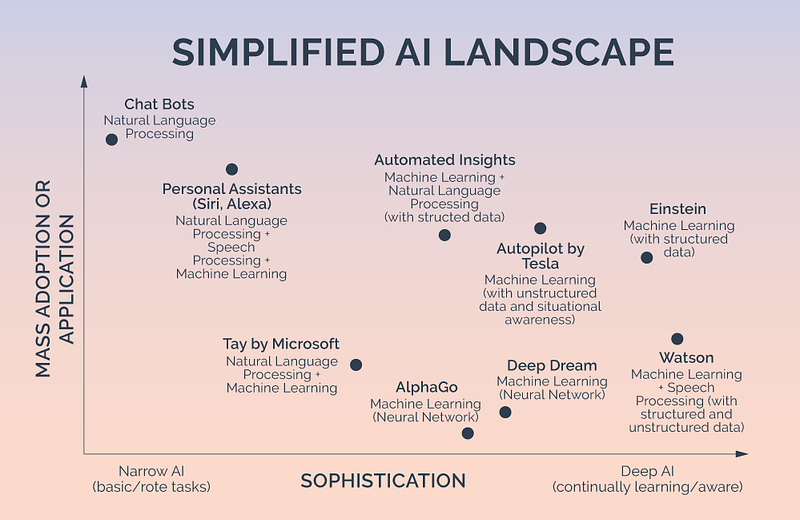
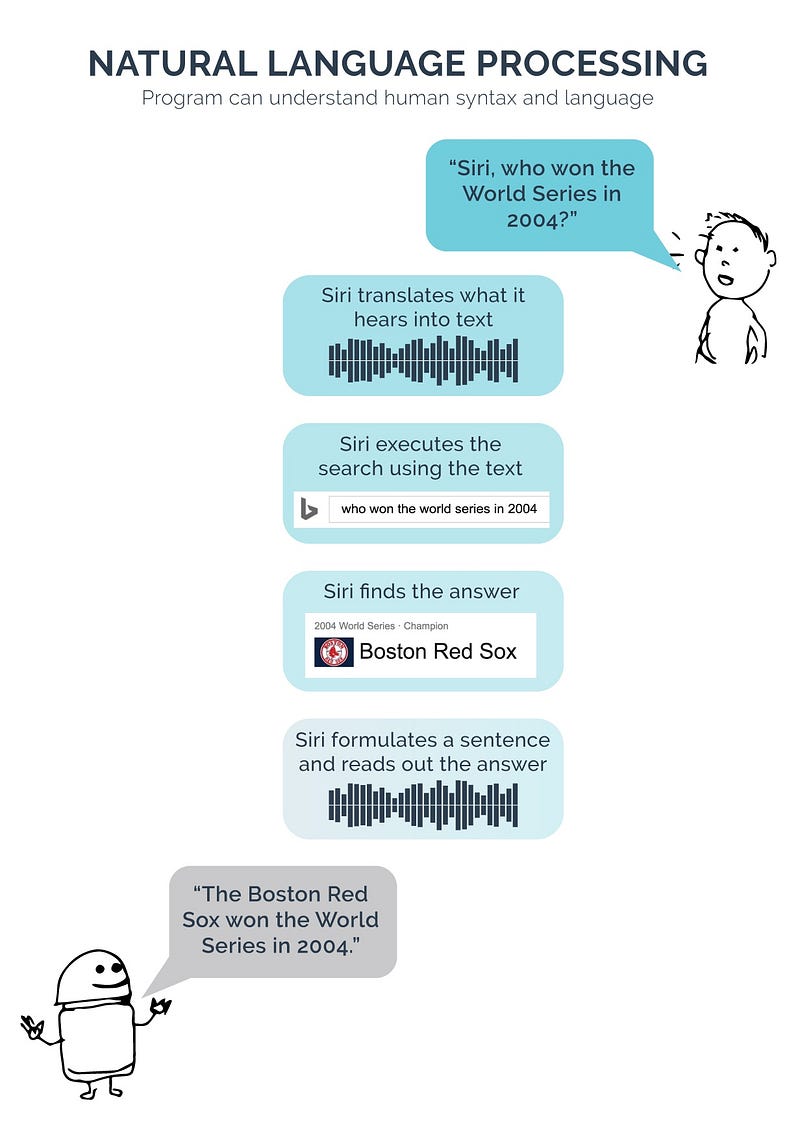
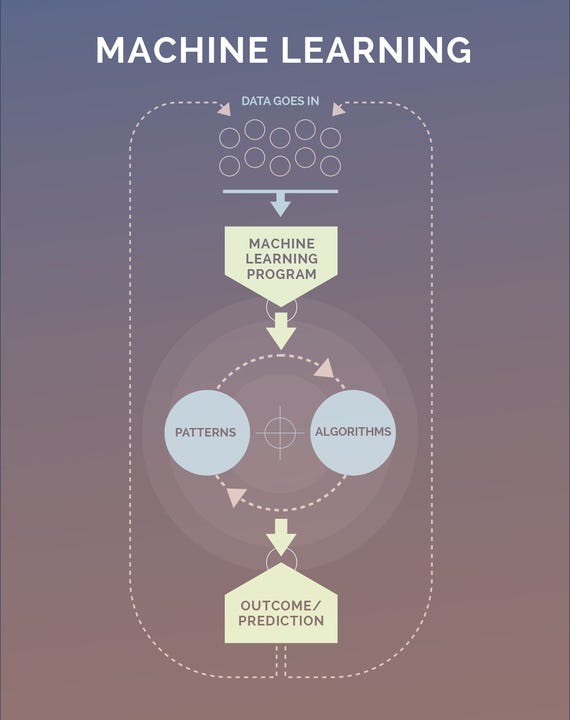
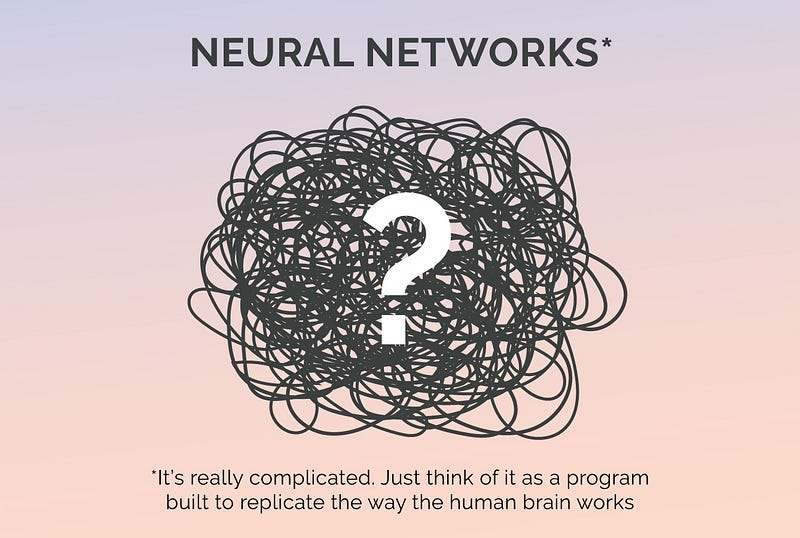
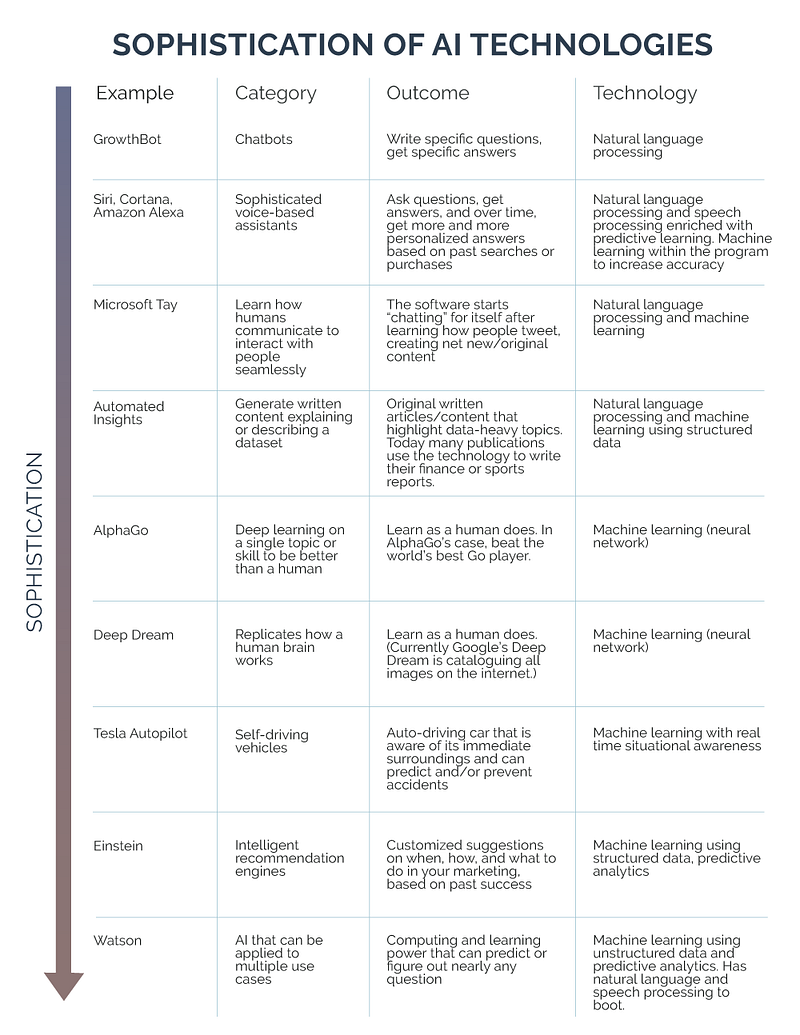
No comments:
Post a Comment